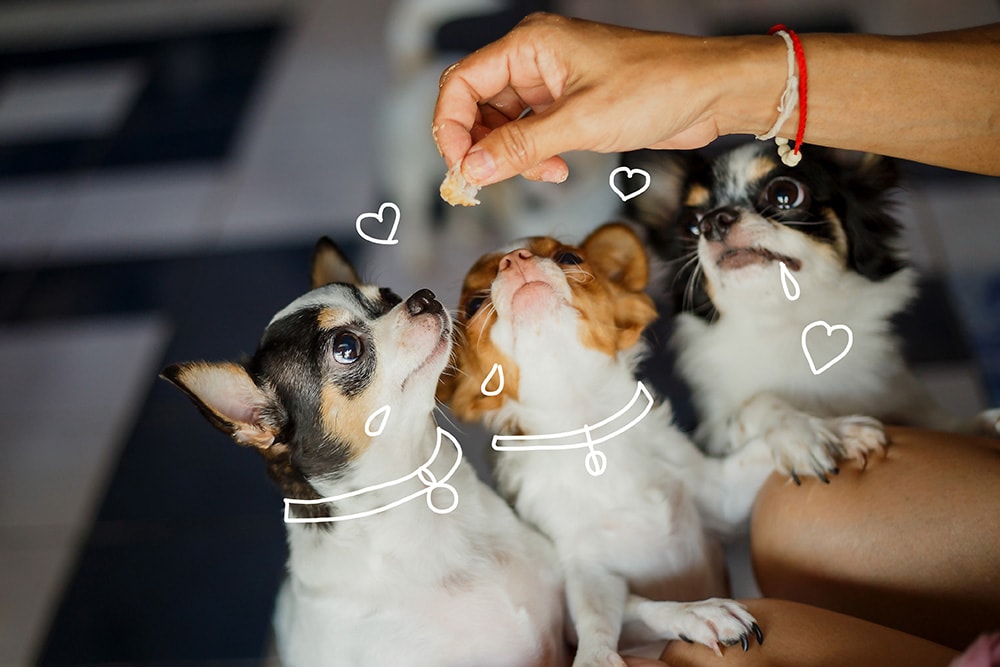Keeping your Pet at a Healthy Weight
Pet obesity continues to be a growing concern for vets and pet owners. It’s estimated that 65% of dogs and 39% of cats in the UK are either overweight or obese*, so there’s still some work to be done in ensuring our pets maintain a healthy body shape.
How do you know if your pet is overweight?
Just like humans, gaining weight is often a gradual process for pets. It’s not always easy to spot a few pounds creeping on, but there are a few things you can do to monitor your pet’s weight:
- On a regular basis, feel around your pet’s middle when they’re standing up. It should be easy to feel their ribs and spine. You should also be able to feel a slight waist dip.
- If you can’t find a tucked in shape and their middle is more tubular shape, then your pet may be overweight. Talk to your vet about a weight loss plan.
If you need some help assessing your pet’s condition, body condition charts show the differences between underweight and overweight animals.
Take a look at the Royal Canin charts to see where your pet might be when it comes to their body shape or check out the Body Condition Score (BCS) feature in #BestForPets magazine issue 4.

How to prevent your pet gaining weight
If you believe that your pet is overweight, you should consult your vet as soon as possible to ensure that there are no medical reasons for the weight gain. Your vet will be able to offer you advice on how to gently reduce their weight.
Along with any advice from your vet, you can also:
- Reduce their calories Once you’ve consulted your vet, they’re likely to recommend a lower calorie diet food to help get your pet’s weight down.
- Increase their exercise It’s reported that 44% of owners walk their dog for less than 30 minutes at a time and 13% of dogs are not walked every day**. If you’ve noticed your dog gaining weight, simply extending your dog’s walk by an extra ten minutes or taking them out for another short walk during the day will help them to burn fat.
- Give pet treats with care Only give your pet treats designed for animals. Commercial treats do offer variety but give them sparingly, or use lower calorie/specific treats if giving a higher number, during training for example. Understand that treats are contributing to your pet’s daily calorific intake and will have an impact on their overall weight.
- Avoid giving your pet leftovers from your meal 15% of owners feed scraps as one their dog’s main types of food**. Human food has a higher calorie level, so your pet’s weight can quickly pile on if we give them scraps off of our plates.
- Weigh out your pet’s food Either as directed by your vet (if on a weight loss program) or appropriate to your pet’s current weight. Avoid guessing the amount of food you’re giving them. Just a small amount of additional food at mealtimes on a daily basis can quickly have a negative effect on your pet’s weight.
To get some ideas on how to keep your pets fit, check out Feline Fitness: Exercise Tips for Cats and Doggy Fitness: Tips on keeping your canine chum fit and happy.
Always double check with your vet before starting your pet on a new diet, new diets can really help improve your pet’s life but you don’t want to pick the wrong one!
*Source: Royal Canin, **Source: PDSA 2019 Paw Report
Looking for pet insurance?
While you’re here, why not take a look at out our pet insurance policies?
You can get an online quote in minutes or speak our friendly UK-based call centre team on 0808 164 8000.
You might also be interested in…
Get a quote in minutes…

Existing customers
Call now on 0808 164 7999
to discuss your policy with us.
Monday - Friday: 08:00 - 20:00 Saturday: 09:00 - 14:00





 Back
Back
